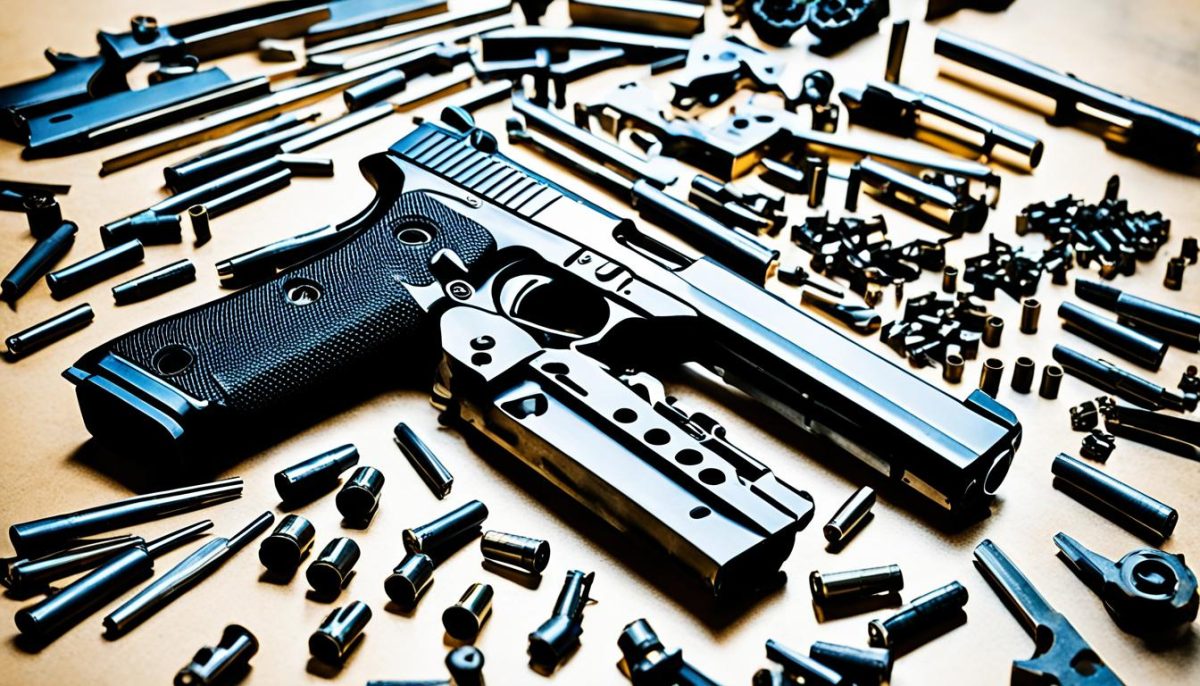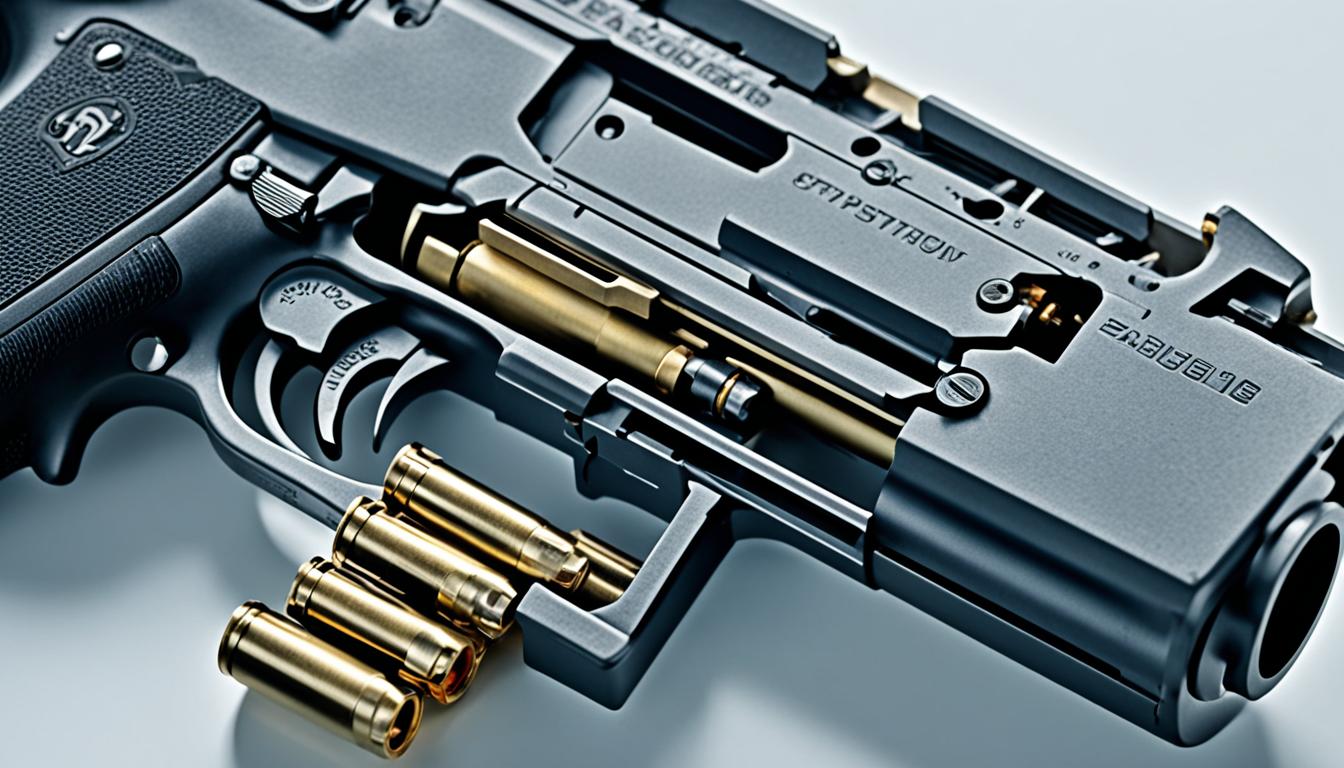In this article, we’ll delve into the intricate mechanics of semi-automatic pistols, exploring how these popular firearms load, fire, and cycle rounds. By breaking down the key components and firing cycle, we’ll provide a comprehensive understanding of these versatile weapons.
Semi-automatic pistols, also known as semi-auto or self-loading pistols, are a type of handgun that automatically loads the next round into the chamber after each shot is fired. This process, known as the semi-automatic firing cycle, is what sets these pistols apart from their revolver counterparts.
As we dive deeper into the mechanics of semi-automatic pistols, we’ll uncover the inner workings that make these firearms so efficient and reliable. From the trigger mechanism to the magazine system, each component plays a crucial role in the overall function of a semi-auto pistol. By understanding how these parts work together, we can gain a better appreciation for the engineering and design that goes into these modern handguns.
The Basic Mechanism of a Semi-Automatic Pistol
Understanding the inner workings of a semi-automatic pistol is key to appreciating how these firearms function. The semi-auto pistol firing cycle and the semi-automatic firearm loading process are both integral parts of the overall semi-auto pistol operation cycle. Let’s delve into the details of the semi-auto pistol mechanism and explore the key components that enable its self-loading functionality.
Understanding the Firing Cycle
When the trigger of a semi-automatic pistol is pulled, a complex series of events is set in motion. The semi-auto pistol parts work together to facilitate this firing cycle:
- The trigger pull causes the firing pin to strike the primer, igniting the gunpowder in the cartridge.
- The expanding gases from the ignited powder push the bullet through the semi-automatic firearm components and out of the barrel.
- The rearward motion of the slide, powered by the recoil, extracts the spent cartridge case and cocks the hammer or striker for the next shot.
- The spring-loaded magazine then automatically feeds the next round into the chamber, ready for the next trigger pull.
This cyclical process of firing, ejecting the spent case, and reloading the next round is the core of the semi-auto pistol mechanism, allowing for rapid and consecutive shots without the need for manual reloading between each shot.
Key Components and Their Functions
At the heart of a semi-automatic pistol are several crucial components that work in harmony to enable its self-loading operation:
- Barrel: Guides the bullet as it is fired and accelerates it to the desired velocity.
- Magazine: Stores the ammunition and feeds the cartridges into the chamber.
- Slide: Cycles back and forth, extracting the spent case and loading the next round.
- Trigger: Initiates the firing sequence when pulled.
The coordinated interaction of these semi-automatic firearm components is what allows a semi-automatic pistol to fire, eject the spent cartridge, and automatically load the next round from the magazine, ready for the next trigger pull.
“The semi-automatic pistol is a remarkable feat of engineering, seamlessly integrating its key components to deliver a smooth, efficient, and user-friendly firing experience.”
How Does A Semi Automatic Pistol Work
To understand how a semi-automatic pistol operates, we need to delve into the seamless integration of its various components. This self-loading design is a key feature that sets these handguns apart from their manual counterparts, allowing for a more efficient and streamlined firing process.
At the heart of a semi-automatic pistol’s mechanism is the firing cycle, which involves several crucial steps. Let’s explore this sequence in detail:
- Trigger Pull: When the shooter pulls the trigger, the firing pin is released, striking the primer of the cartridge and igniting the gunpowder.
- Explosion and Recoil: The ignited gunpowder propels the bullet forward, while the recoil of the explosion pushes the slide rearward.
- Slide Retraction: As the slide moves back, it extracts the spent cartridge case and ejects it from the chamber.
- Spring Compression: The rearward motion of the slide compresses the recoil spring, which will later drive the slide forward.
- Slide Release: Once the slide has reached its rearmost position, the slide release lever allows the slide to be pushed forward by the recoil spring.
- Cartridge Loading: As the slide moves forward, it strips a new cartridge from the magazine and chambers it, ready for the next shot.
This seamless cycle of loading, firing, and ejecting rounds is what defines the semi-automatic operation of these pistols. By understanding the key components and their functions, we can appreciate the mechanical elegance that underpins the semi-automatic firearm’s operation.
| Component | Function |
|---|---|
| Trigger | Releases the firing pin to ignite the cartridge |
| Firing Pin | Strikes the primer of the cartridge, initiating the firing process |
| Slide | Cycles back and forth, extracting spent cartridges and loading new ones |
| Recoil Spring | Drives the slide forward, chambering a new round after each shot |
| Magazine | Stores and feeds ammunition to the firearm |
By understanding the intricate mechanics of how semi-auto pistols work, we can appreciate the engineering excellence that goes into these popular and widely used firearms.
“The semi-automatic design allows for a more efficient and streamlined firing process, delivering a level of performance that is unmatched by manual-action pistols.”

Safety Considerations for Semi-Automatic Pistols
When it comes to using a semi-automatic pistol, safety should always be our top priority. These firearms offer a convenient self-loading function, but they also require responsible and attentive handling to ensure everyone’s well-being. Let’s explore some key safety considerations that every semi-auto pistol user should keep in mind.
First and foremost, proper firearm safety training is essential. We strongly recommend seeking instruction from certified professionals to learn the correct techniques for loading, unloading, and operating a semi-automatic pistol. Understanding the mechanics and handling procedures is crucial for safe and effective use.
Additionally, maintaining our semi-auto pistol in optimal condition is vital. Regular cleaning, lubrication, and inspections can help prevent malfunctions and ensure reliable performance. Paying close attention to any signs of wear or damage can help us address issues before they become safety concerns.
Finally, we must always exercise due diligence when handling a semi-automatic pistol. This includes keeping the firearm securely stored when not in use, being aware of our surroundings, and never pointing the muzzle at anything we don’t intend to shoot. By staying vigilant and prioritizing safety, we can confidently and responsibly enjoy the benefits of a semi-auto pistol.

